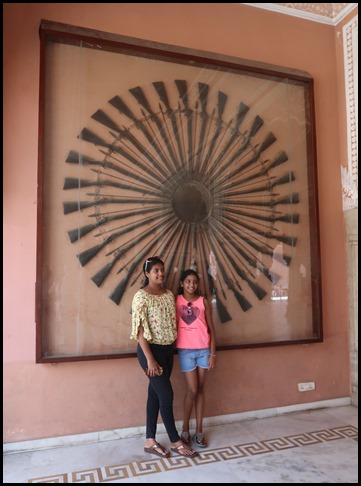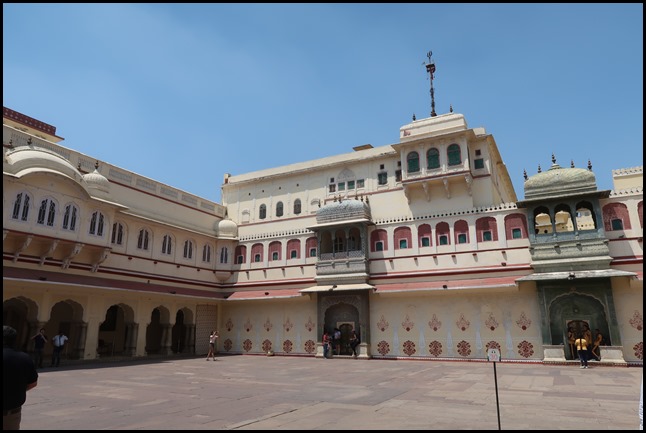City Palace, Jaipur

|
The City Palace, Jaipur  Through the ‘prettier’ city gate, heading to the City Palace.
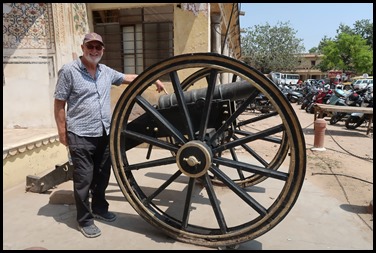 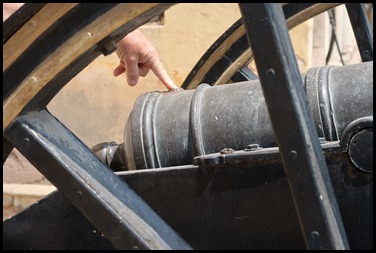 Bear was soon in
position, trigger finger in action.
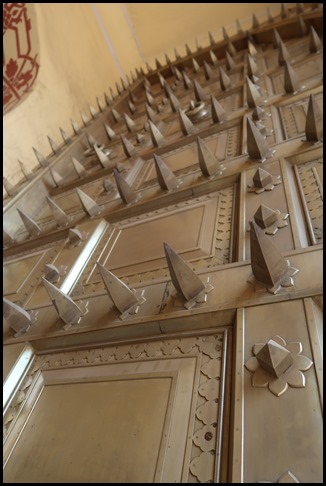 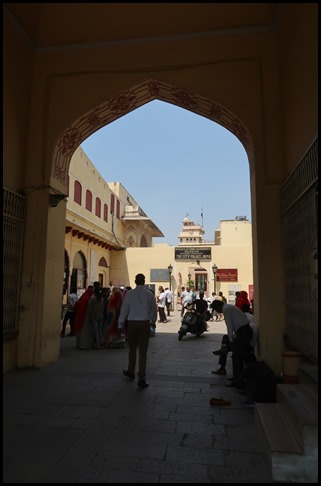 Through the ‘elephant
retardant’ gates and into the outer
courtyard.
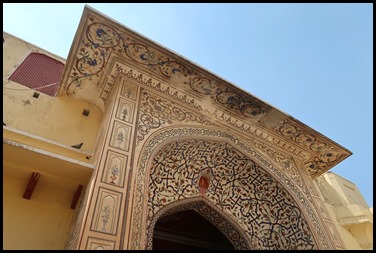 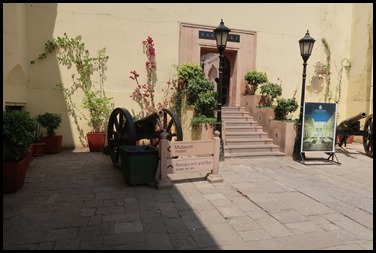 A fresh-looking
arch. We bimbled about in the museum but
sadly, no photography.
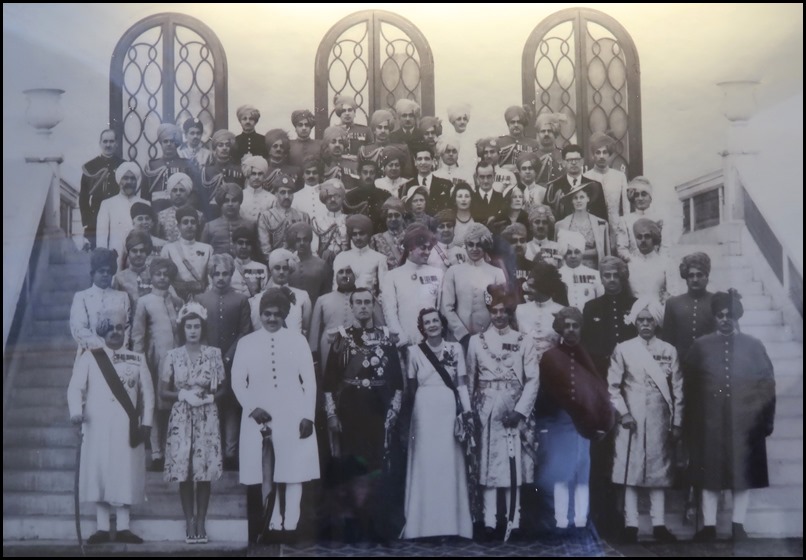 Along the corridor I was allowed to take
this picture featuring Lord and Lady Mountbatten, the
caption read: His Highness Maharaja Sawai Man
Singh of Jaipur with other rulers of Indian Princely states during the Silver
Jubilee Ceremony.
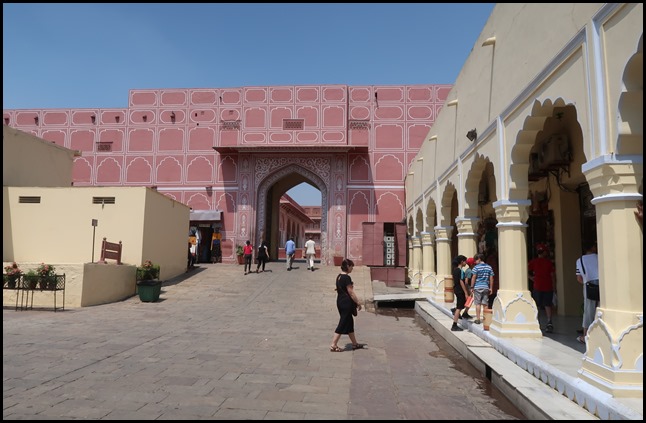 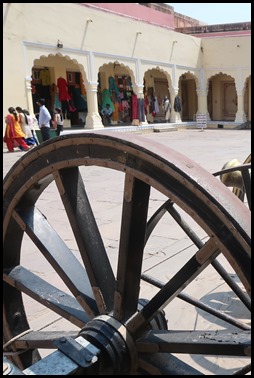 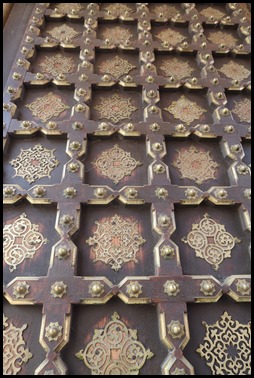 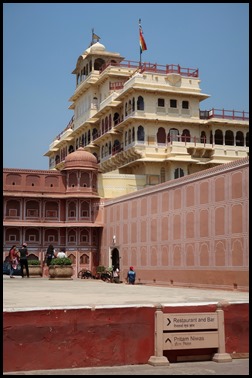 Many different
styles from Rajput, Mughal and European. The present royal family lives in the seven-storied building
on the right. The ‘Pink City’ Palace was built between 1729 and 1732
commissioned by Sawai Jahal II. He planned and built the outer walls and later
rulers added to the architecture right up until recently.
The palace complex is spread over a
large area occupying one seventh of the old city of Jaipur.
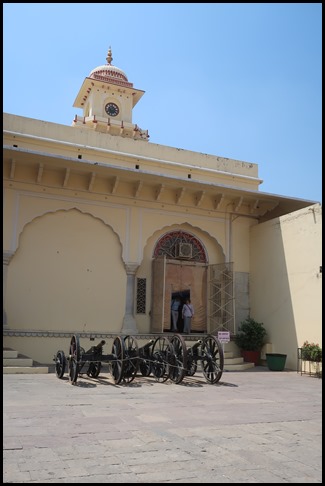 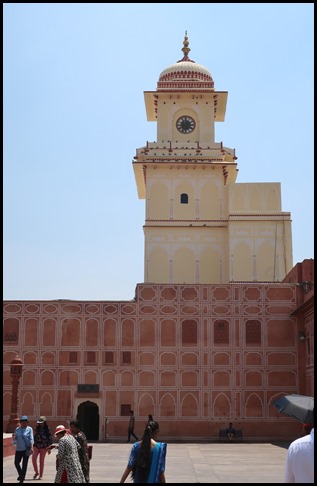 The
clock tower is a sign of European influence in the Rajput court as the
clock was installed in a pre-existing tower in 1873. The clock, purchased from
Black and Murray & Co. of Calcutta, aimed to introduce a little Victorian
efficiency and punctuality into court proceedings.
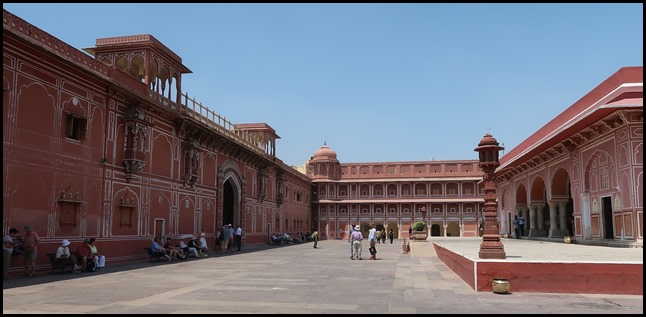 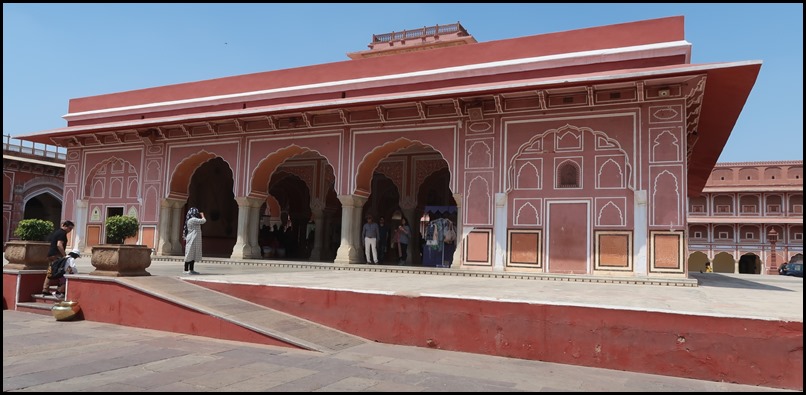 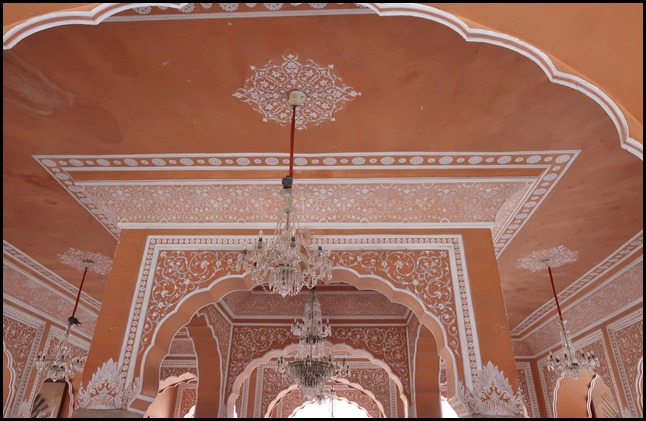 In the centre of this courtyard is the single-storied and very pretty Sarvato Bhadra. In the past it was used for coronations, important festivals and court business. Today it holds many knick-knacks including the world famous silver water jars.
Gangajalis are the largest silver objects in the world. They were made in the Mistri Khana (one of the 26 karkhanas of Jaipur State), the City Palace, Jaipur by two silversmiths, Govind Ram and Madhav. Each jar was made out of 14,000 Jhar Shahi (Jaipur silver coins), which were issued from the Kapatdwara treasury of Jaipur State in the year 1894. The coins were melted into sheets of silver. A wooden mould was prepared and over that the sheets were beaten and shaped as the Jars. No soldering was done. The entire process took two years and the Jars were ready by 1896. Pre-assuming the Jars made by 14,000 coins and after subtracting five per cent for the loss and human factors, it can be safely computed that each Jar weighed 345 kilograms. The silversmiths also shaped the lids and handles. Circular base with wheels were constructed for easy movement. Ladders were made for reaching the mouth of the Jar. Dimension of each jar: Weight 245 kilograms Height: Five feet three inches Circumference: Fourteen feet ten inches Capacity: 900 gallons or 4091 litres (As mentioned in the Guinness Book of Records). Interestingly, Maharaja Sawai Madho Singh II took these jars, filled with Gangajal (Ganges water) on his voyage to England to attend the coronation ceremony of King Edward VII in the year 1902.
Two ladies pose in front of a gun collection.
 We bimbled across the courtyard and
entered the Riddhi-Siddhi Pol
(doorway).
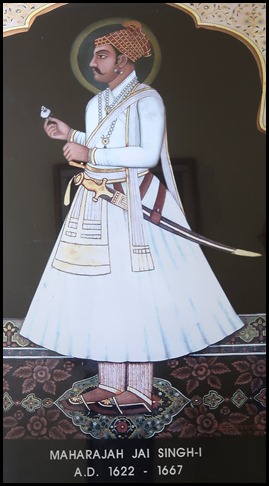 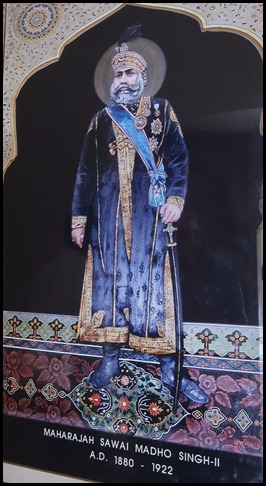 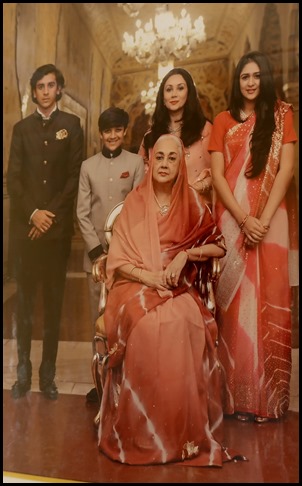 There were portraits of all the rulers along the passageway, we just added Jai Singh II and Sawai Madho Singh II along with the present royal family. Padmanabh Singh (top left, pictured with his mother, sister, brother and seated grandmother) was born on the 12th of July 1998. His mother is Diya Kumari, only daughter of Bhagwani Singh. His father, Narendra Singh was the son of a member of the household staff and the relationship was frowned upon. His grandfather adopted Padmanabh as his heir in 2002. He attended school at Millfied in Somerset and then Mayo College in Rajasthan, he is a keen polo player as many of his ancestors were. Bhawani Singh died in 2011 and as he was under-age, Padmanabh was informally crowned as the Maharaja of Jaipur under the guardianship of his grandmother. He took the ‘role’ on reaching the age of eighteen. The New York Times reported in 1970: LONDON, June 24—The Maharaja of Jaipur, former ruler of a state in India with more than three million people, died today during a polo match at Cirencester, Gloucestershire, about 90 miles from London. His age was 58. A fortnight ago, he had a bad fall while playing polo at Windsor. He suffered a concussion and bruising and resumed playing only today. He collapsed during an interval in the match. Like many other Indian princes, the maharaja, a great polo player, kept up his friendship with Britain after India became independent in 1947, ending centuries of direct personal rule by India's princes. Sawai Man Singh was descended from a Rajput family that established the state of Jaipur in the 12th century. He was 10 years old when he was adopted by the then maharaja of Jaipur. He succeeded him a year later, but did not assume full ruling powers until he became 21 years of age.
Through the Peacock Door we found
ourselves in the Pritam Chowk (The Court of the Beloved) which has.........
 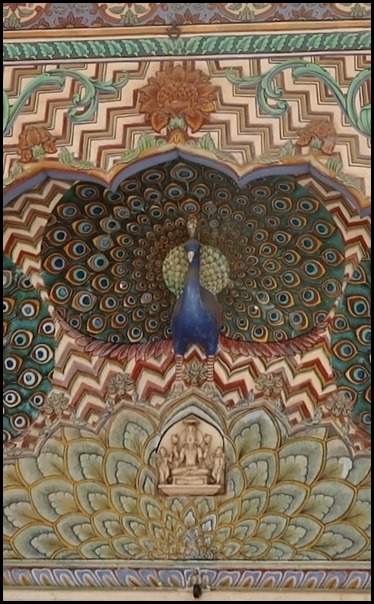 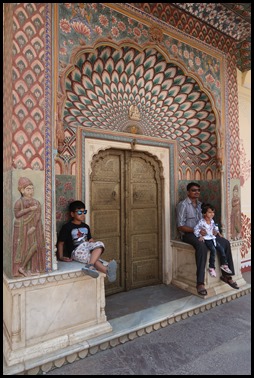 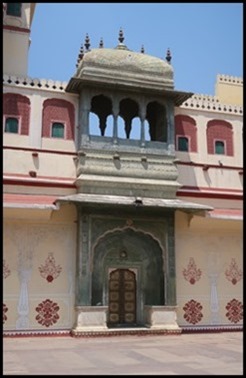 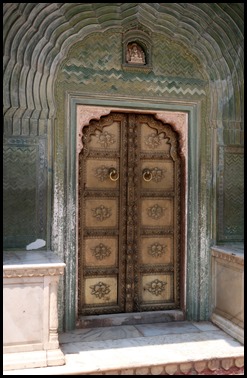 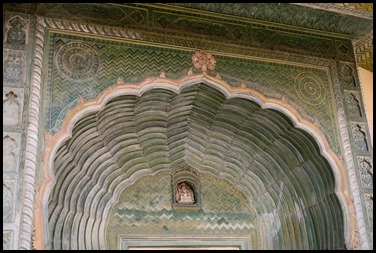  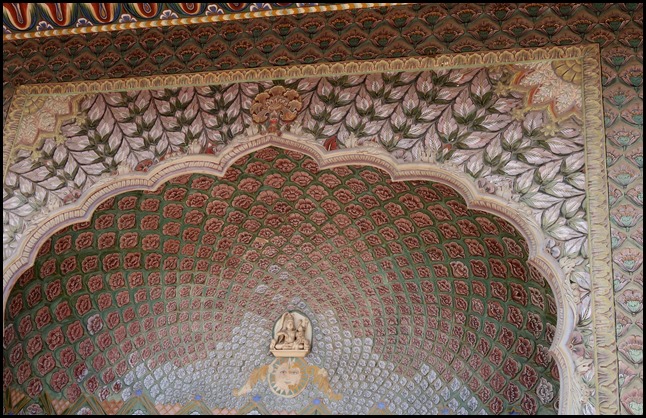 .................four delicately painted doorframes representing the
seasons.
 A lovely
courtyard, the present Family can look down on. The we bimbled about and
took in many features, the textile museum, gun collection and left after a
thoroughly good visit. Bits and bobs
follow.........
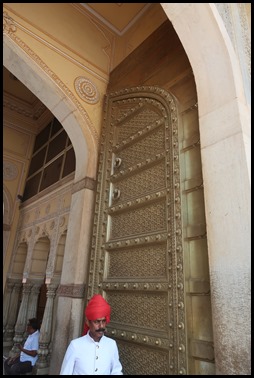 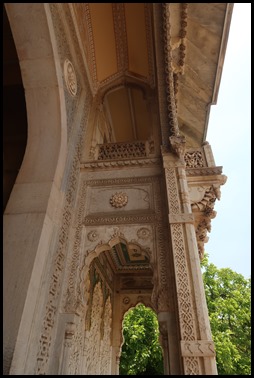 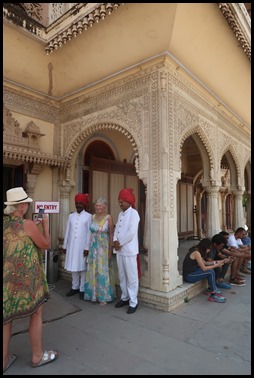 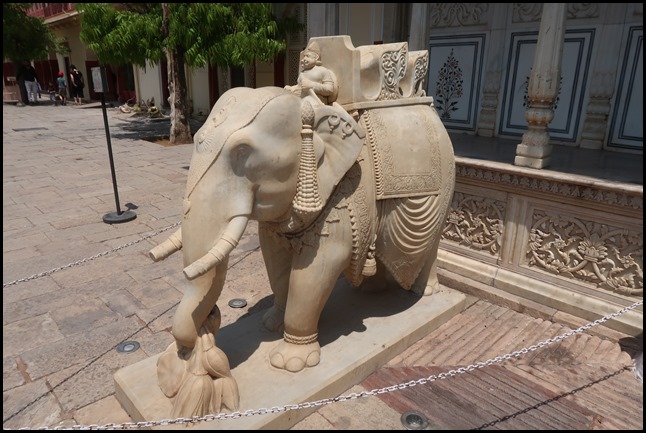 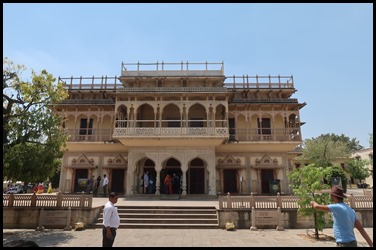 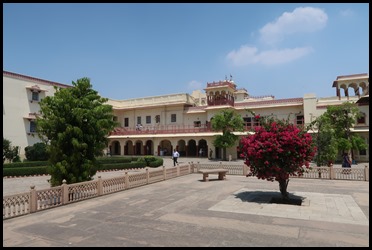 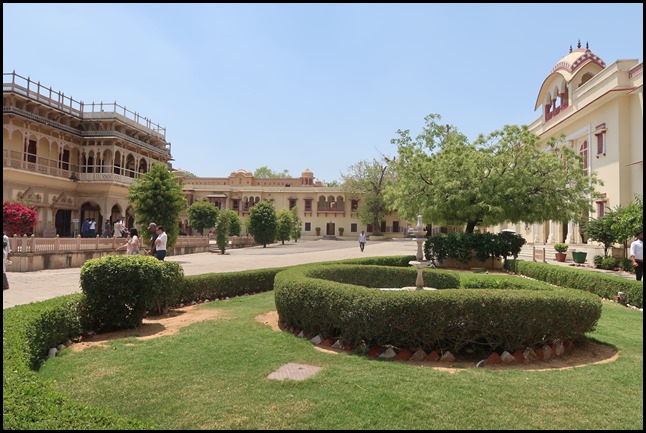 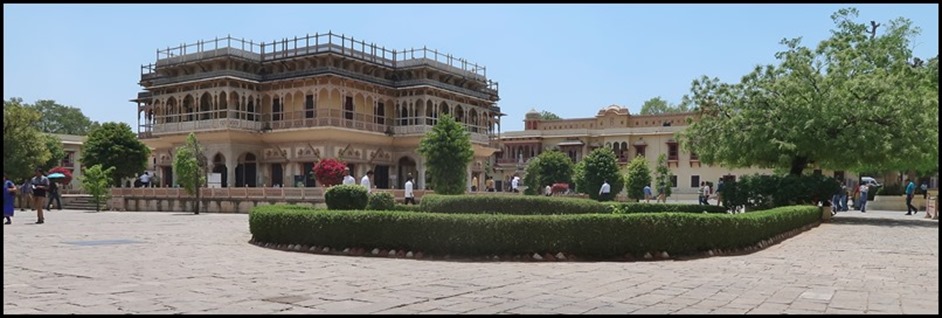 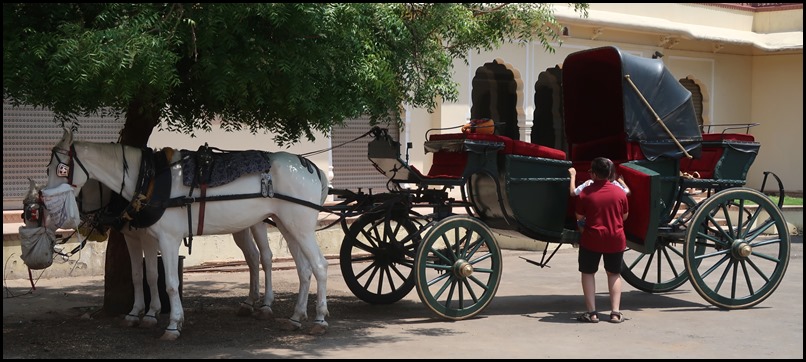 ALL IN ALL
GORGEOUS
YET ANOTHER STUNNING
PALACE
|

